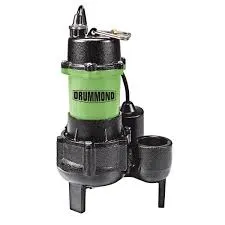English
- Afrikaans
- Albanian
- Amharic
- Arabic
- Armenian
- Azerbaijani
- Basque
- Belarusian
- Bengali
- Bosnian
- Bulgarian
- Catalan
- Cebuano
- Corsican
- Croatian
- Czech
- Danish
- Dutch
- English
- Esperanto
- Estonian
- Finnish
- French
- Frisian
- Galician
- Georgian
- German
- Greek
- Gujarati
- Haitian Creole
- hausa
- hawaiian
- Hebrew
- Hindi
- Miao
- Hungarian
- Icelandic
- igbo
- Indonesian
- irish
- Italian
- Japanese
- Javanese
- Kannada
- kazakh
- Khmer
- Rwandese
- Korean
- Kurdish
- Kyrgyz
- Lao
- Latin
- Latvian
- Lithuanian
- Luxembourgish
- Macedonian
- Malgashi
- Malay
- Malayalam
- Maltese
- Maori
- Marathi
- Mongolian
- Myanmar
- Nepali
- Norwegian
- Norwegian
- Occitan
- Pashto
- Persian
- Polish
- Portuguese
- Punjabi
- Romanian
- Russian
- Samoan
- Scottish Gaelic
- Serbian
- Sesotho
- Shona
- Sindhi
- Sinhala
- Slovak
- Slovenian
- Somali
- Spanish
- Sundanese
- Swahili
- Swedish
- Tagalog
- Tajik
- Tamil
- Tatar
- Telugu
- Thai
- Turkish
- Turkmen
- Ukrainian
- Urdu
- Uighur
- Uzbek
- Vietnamese
- Welsh
- Bantu
- Yiddish
- Yoruba
- Zulu
Telephone: +86 13120555503
Email: frank@cypump.com
Dec . 04, 2024 10:18 Back to list
split case centrifugal pump
Split Case Centrifugal Pump An Overview
Split case centrifugal pumps are essential machinery in various industries, known for their efficiency, reliability, and durability in pumping fluids. Unlike standard centrifugal pumps, which typically have a single casing, split case pumps are designed with two halves that are split along a vertical centerline. This design offers numerous advantages that make them a popular choice in many applications.
Design and Construction
The primary feature of a split case centrifugal pump is its unique construction. The pump consists of two main parts—the upper and lower halves of the casing—which can be easily separated for maintenance and inspection without the need to disassemble the entire pump. This split design facilitates convenient access to internal components such as the impeller, shaft, and bearings, allowing for quicker repairs and less downtime.
The impeller, which is critical in creating the necessary pressure and flow, is typically enclosed within the casing. These pumps can have one or more impellers, allowing for variation in flow rates and pressure according to the specific application. They are usually mounted horizontally, though vertical configurations are also available to accommodate different installation requirements.
Operating Principles
Split case centrifugal pumps operate on the principle of centrifugal force. When the impeller rotates, it imparts kinetic energy to the fluid, causing it to move outward from the center of the impeller. As the fluid exits the impeller, the design of the casing converts this kinetic energy into pressure energy, allowing the fluid to be discharged efficiently from the pump through the discharge pipe.
These pumps are capable of handling various types of fluids, including water, chemicals, and other liquids. They are designed to work under different conditions, including high flow rates and varying discharge pressures, making them versatile for various industrial applications.
Applications
Split case centrifugal pumps are widely used in numerous sectors due to their efficiency and reliability. Some common applications include
1. Water Supply and Distribution These pumps are frequently employed in municipal water systems for water distribution and treatment facilities. Their ability to handle large volumes of water makes them ideal for these applications.
split case centrifugal pump

2. Fire Protection Systems In fire safety, split case pumps are used to provide a reliable source of pressurized water for fire suppression systems, ensuring that sufficient water can be delivered quickly in emergencies.
4. Industrial Processes Many manufacturing and chemical processing plants utilize split case pumps to transfer various liquids safely and efficiently.
Advantages
The design of split case centrifugal pumps provides several advantages over other types of pumps
- Ease of Maintenance The split casing allows for easy access to internal components, reducing maintenance time and costs.
- High Efficiency These pumps are noted for their high hydraulic efficiency, which translates to lower energy consumption during operation.
- Robust Construction Built to withstand harsh operating conditions, split case pumps are made from durable materials that ensure long service life.
- Lower Noise Levels Their horizontal design tends to produce less vibration and noise during operation compared to other pump types.
Conclusion
Split case centrifugal pumps are invaluable in a range of industries, providing efficient and reliable fluid transport solutions. Their unique design, characterized by easy maintenance and robust performance, makes them stand out among centrifugal pumps. As industries continue to seek greater efficiency and reliability in fluid transport, split case pumps will undoubtedly remain a preferred choice for engineers and operators alike. By understanding their capabilities and applications, users can make informed decisions about the right pump for their specific needs, ensuring optimal performance and minimal downtime.
-
ISG Series Pipeline Pump - Chi Yuan Pumps | High Efficiency, Durable Design
NewsAug.01,2025
-
Advanced Flue Gas Desulfurization Pump with GPT-4 Turbo | Durable & Efficient
NewsJul.31,2025
-
ISG Series Vertical Pipeline Pump - Chi Yuan Pumps | Advanced Hydraulic Design&Durable Construction
NewsJul.31,2025
-
ISG Series Vertical Pipeline Pump - Chi Yuan Pumps | Energy Efficient & Low Noise
NewsJul.31,2025
-
pipeline pump - Chi Yuan Pumps Co., LTD.|High Efficiency&Low Noise
NewsJul.31,2025
-
ISG Series Vertical Pipeline Pump - Chi Yuan Pumps Co., LTD.|High Efficiency, Energy Saving, Low Noise
NewsJul.30,2025










